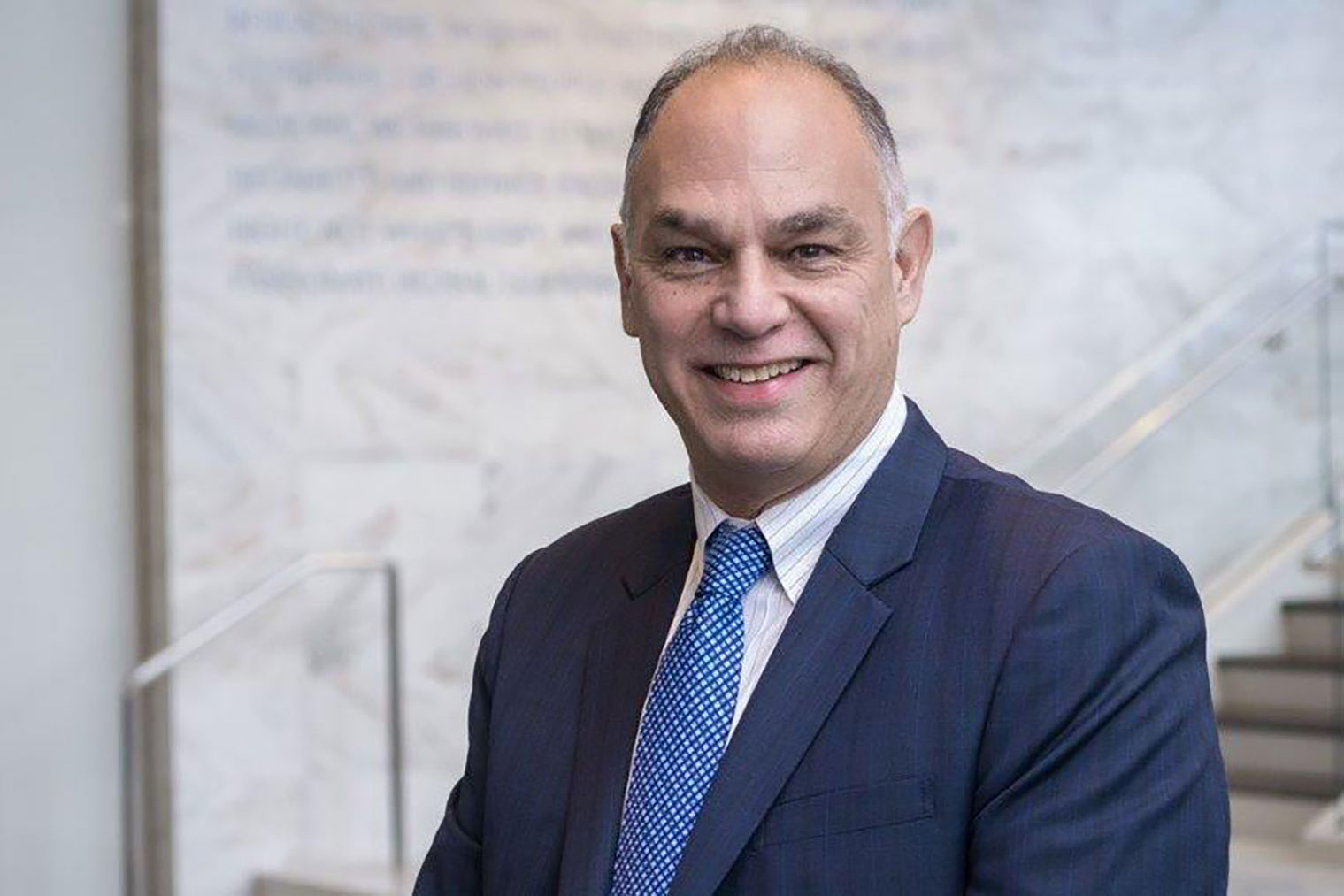Chrys Kokino has been involved in the biosimilars market prior to the first biosimilar being approved in Europe in 2006. At Roche at the time, his job was to lead a task force which was given the objective of planning a strategy to preserve and protect the companies billion-dollar originator biologics franchises as well as build a plan which would counter the introduction and use of biosimilars. Now, as the President of Accord BioPharma, the U.S. specialty division of Intas Pharmaceuticals, Ltd., he is responsible for leading the commercialization efforts of specialty products which includes a broad portfolio of biosimilars.
PM360 spoke to Kokino about the evolution of the biosimilars market from its nascent days, why the now increased competition within the market is causing some companies to reconsider developing biosimilars, what to look for over the next few years, and how Accord’s approach is a bit different from what other companies are doing.
PM360: From your time at Roche when you were dealing with biosimilars as potential competition to now leading the launch of biosimilars at Accord and Intas, how have you seen the marketplace for biosimilars evolve over that time? What would you say has been the biggest change?
Chrys Kokino: I’ll perhaps date myself a little bit in the sense that I’ve been part of this whole biosimilar movement before the rest of the world even knew what these biosimilars were about. This was back in 2004/2005 when we were just hearing about biosimilars for the first time and they were the great unknowns. Having worked for big pharma companies for a number of years we were all a little skeptical of what these products would bring to the markets, especially since there were so many unknowns such as how were they developed, what would the regulatory process look like, how would the IP (intellectual property) be handled, how would they be commercialized, etc.
In a previous life, I was heading up one of their anti-biosimilar task forces. In a nutshell, our team objective was to develop a strategy to prepare for the pending introduction of biosimilars. Our job was to not only develop a competitive strategy but also to make sure whoever is considering biosimilars—whether it was regulators looking to approve these products or customers looking to make a transition to these products—that they were well aware that the large pharma organization we were representing had been in the business for many years with data dating back to multiple years of clinical experience with loads of information on the safety and efficacy of our products. The entire premise was that because biosimilars were so new, and there was not a lot of information on the safety and efficacy of those products, customers should be a bit leery prior to jumping on the biosimilar bandwagon.
Fast forward a couple of years when the European Medicines Agency (EMA) developed a regulatory pathway in terms of how these products would be approved and what clinical and scientific data would be required for approval and that is when things started to change. From that point in 2006 all the way to where we are currently today, there has been a very dramatic evolution of these products. And it really all attests to one word: education. In the last 10 to 15 years, what’s changed is that many providers as well as those involved on making decisions about these products have a much better understanding of what biosimilars are, how they are developed, and how they are approved through strict regulatory processes. That would be the number one change, as today we see a much greater acceptance of these products.
Now that you’re responsible for launching biosimilars in today’s market, what are currently the biggest barriers or issues manufacturers and marketers face that impedes the success of their biosimilar products?
If you were to roll back the clock about ten or so years ago, I would’ve said that based on what we knew at that point in time that biosimilars were centered around smaller manufacturers that had taken the leap into developing and launching these products. We could have named the list of companies involved in this space on one hand, such as Teva, Sandoz, Celltrion, etc. But now the big pharma companies have also jumped into the game. Previously, we never would’ve expected the likes of Amgen, Pfizer, Merck, etc., to be interested in biosimilars for the simple fact that they were trying to preserve and maintain the business generated by their respective blockbuster drugs. Now these big pharma companies are doing quite well in their commercialization of biosimilars, and they have used them to offset potential loss of market share by building their product portfolios to consist of originator products and biosimilars. The level of competition is much greater today then we previously anticipated.
How does this increased competition impact the market moving forward?
Look, competition is healthy. Ultimately, it could lead to several outgrowths, such as a decline in overall drug pricing, more access to treatment options for a greater number of patients, or additional patient services being provided. The downside is that as more manufacturers enter the marketplace, the competition is stiffer and the value of developing biosimilars starts to decline. Why, because many of these providers and stakeholders are asking for better prices to ensure a decrease in not only their own individual practice expense but a decline in expense to the overall healthcare system.
As a result, many manufacturers are starting to rethink their ability to enter these marketplaces because it’s a considerable investment. Initially, companies thought it would make sense to pursue the big prize and by introducing one or two of these products they could hit the pharmaceutical lottery. For example, Humira is an approximately $20+ billion worldwide product. If you were able to introduce a biosimilar that captured 4% to 5% of that marketplace, you may be able to receive a vast return on your initial investment. But now as the prices start to decline for biosimilars, those same manufacturers are rethinking their ability to enter what is becoming a highly competitive marketplace.
The secret will be those organizations that have the economies of scale to be successful. For example, at Accord/Intas, we are a fully vertically integrated organization. This means we have the organizational expertise to develop, manufacture, and ultimately commercialize products from start to finish. This allows us to efficiently bring products to market which in turn may be able to provide a greater degree of value for both providers and patients.
Based on what you’ve seen so far, how do you see the biosimilar space evolving in the future? What should marketers and manufacturers be most aware of within the next several years?
If I knew that I would also ask you: What are the six winning lottery numbers…then we could both walk away with a big payday and not have to worry about our futures. I hear many times whether it’s from consultants, vendors, customers, or other colleagues, how some of them profess to be experts in the biosimilar space. I don’t believe that for a minute. There are a number of us who have been on the ground floor of biosimilars from when they first launched. Although we have seen and experienced many changes through the years with biosimilars, we would never profess to be experts for the single fact that this area of biosimilars is constantly changing. The truth is that you must constantly stay up to date on all the changes surrounding biosimilars and plan accordingly. This is what makes this space of biosimilars so fascinating.
For example, 12 years ago we projected that a minimal of 5% to 10% cost savings would be enough to capture at least 50% to 60% of the markets. Well today, prices are in some cases discounted anywhere from 40% to up to 60%. So that hypothesis proved to be completely false. We never would’ve expected pricing and discounts to have reached the levels where they are today. So the point is that through the course of time, there’s continuous evolution of the biosimilar space.
My personal thought is that biosimilars are here to stay. They have already proven that there are considerable cost savings if they’re managed and used appropriately. Without a doubt, a number of patients are benefiting today from these products. On the other side, I think we are in a period where manufacturers will take a second look at whether or not it’s the right business decision to invest in and commercialize these products.
A lot of the traditional challenges that we experienced in the past, such as patent issues, still exist today. The difficulty is you must start developing biosimilar products so early on, at least five to seven years prior to any patent expiration, that by the time that five years is over what initially looked like a very strong business opportunity might not look so strong. Then companies have to make a decision: Do I continue to develop the product or do I abandon it and look for something else that perhaps could have a better return on investment? A third option, which I think we see a lot more of, is the in-licensing of products where you partner with organizations to commercialize and launch these products. That is becoming a bigger trend both in the U.S. and in the worldwide markets as this approach mitigates risk associated with these products.
As you are leading Accord in these decisions, what are the opportunities you’re most looking at? Is it developing biosimilars internally, licensing deals, or something else?
The short answer is all of the above. We have a very strong in-house development capability. We also have a very strong in-licensing organization, and not only the in-licensing of products but also the acquisition of other companies with certain assets and products that fall within the therapeutic areas that we’re looking at. As an organization in the U.S., we have identified three therapeutic areas: oncology, immunology, and critical care. Our focus at this point in time is to look at products that fall within those three areas.
Now that doesn’t mean that we would not be looking at other products. Accord BioPharma is not going to be the company to find the next cure for cancer or the next solution to diabetes. Our corporate foundation is built on three pillars: enhance the patient experience, enhance the customer experience, and provide value. For example, we’re in the marketplace today with a product for advanced prostate cancer with two other competitors. All three products fall within the category we broadly call leuprolide’s. There are differences in the products in the sense that each provides different benefits. There are other product benefits which support our premise of enhancing the patient experience, and enhancing the customer experience, which in this case is either the healthcare professional (HCP) who is preparing the treatment or who is administering the sub-Q injection.
The third foundation is value. Our product is not only competitively priced, but based on the merits of the product’s different formulation (leuprolide mesylate injectable emulsion), CMS granted our product a unique billing code. This unique code (J1952) will allow us to appropriately manage pricing and reimbursement which is necessary in the world of buy & bill drugs. This is an example of how we’re looking to do things, not perhaps produce the next greatest mousetrap, but a better mousetrap—a better way to treat these patients.
Ultimately, we want to establish ourselves as that one specialty pharma company in the U.S. that takes the time to listen to what patients have to say. We’ve tried to build upon the patient suggestions we receive and then introduce in the marketplaces products that will enhance these patients’ ability to take these products, enhance the safety and efficacy of the products, and provide value so that we can be viewed as a company that is really patient-centric focused and a little bit different than what most companies are doing today.
What makes your patient-centric approach different from other companies in the industry?
Every company in the pharma industry will tell you they’re patient-centric focused, but it’s one of these issues where your actions have to then reflect what your company is really all about. I won’t comment on what other companies are doing, but I will comment on what we’re doing. It all begins with the fact that we’re trying to create a company where the people in the company and the culture is what matters the most. Again, I suppose you could say everybody says the same thing, but let me explain why what we’re doing is a little different.
We have hand-selected all of the senior leaders within our organization who have had prior experience in terms of commercializing products in our therapeutic areas of focus. So their battle test is high.
They understand the challenges within the pharma industry. They all come with the same like-mindedness that we’re not looking to just introduce another drug, but are looking to go beyond biology and introduce products that make a difference in patients’ lives.
For many of us, this is not a job but a passion. Our intent is to create a different kind of company and leave a legacy behind in terms of how you do it right in building a specialty pharma organization. The premise of trying to drive business is not the primary objective. Our primary concern is always about what can we do to help patients and providers. We believe that by following this approach we will establish Accord BioPharma as a different kind of specialty pharma company and in turn be recognized as a company that did it the right way and created a model which others will want to emulate in the future.










